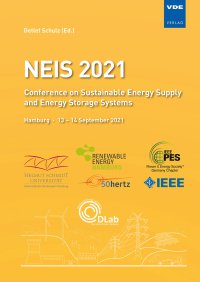Potential analysis of EV and PHEV in weak low-voltage grids
Conference: NEIS 2021 - Conference on Sustainable Energy Supply and Energy Storage Systems
09/13/2021 - 09/14/2021 at Hamburg, Deutschland
Proceedings: NEIS 2021
Pages: 6Language: englishTyp: PDF
Authors:
Helm, Sebastian; Tayyab, Muhammad; Hauer, Ines; Wolter, Martin (Otto von Guericke University Magdeburg, Magdeburg, Germany)
Balischewski, Stephan; Komarnicki, Przemyslaw (Fraunhofer Institute for Factory Operation and Automation, Magdeburg, Germany)
Abstract:
During the past years, the rising of the penetration from electric vehicles (EV) and plug-in hybrid electric vehicles (PHEV) has gained significant attention due to its influence on power system stability. Especially, single-phase charging vehicles cause unbalances of the voltage in low voltage grids. Therefore, this paper presents an asymmetric power flow calculation analyzing the impact of charging EV and PHEV. The considerations are shown on a real weak low voltage grid including measured unbalanced load profiles, photovoltaic systems and distributed electrical vehicles. However, the availability of vehicles is considered and derivatively by a mobility survey. The scenarios of 2020, 2030 and 2035 with an increasing number of heat pumps, photovoltaic systems and electrical vehicles show the trend over the years. The results show that asymmetric EV/PHEV charging causes significant voltage unbalances that exceed the allowed voltage limits of 2 % for 10 min or a single time 4 %. Another result is the analyzed vehicle-to-grid (V2G) potential of the EV's battery storage.


